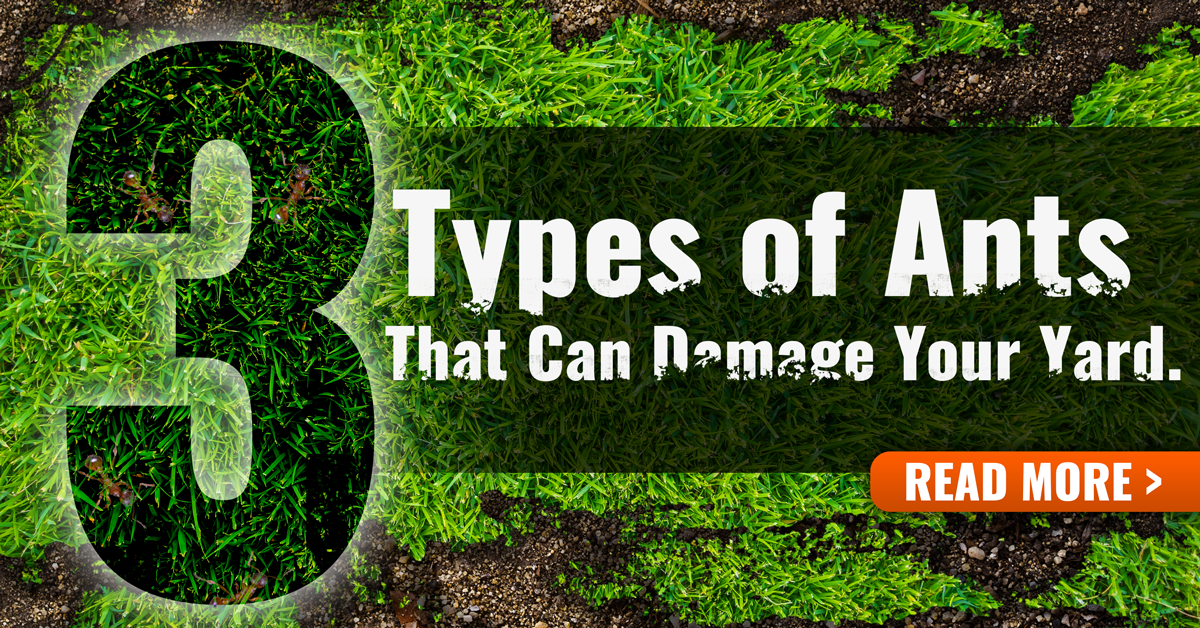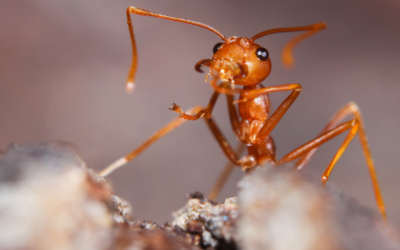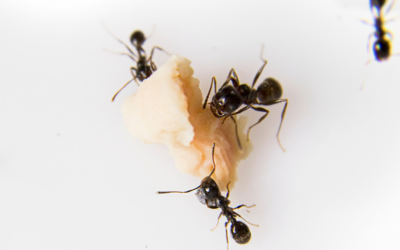This time of year, isn’t it nice to have a yard that is the envy of your neighbors? Many towns even have a “yard of the month” contest. While we all want to have lush, thick, green grass, the reality is that it’s hard to keep our yards in tip-top shape in the scorching Texas sun. But, keeping our grass looking great goes beyond watering. There are other factors that can ruin a yard this time of year. One of the biggest threats is a teeny tiny pest: the ant.
There are three species or categories of ants that cause the most damage to properties in our area. Without proper treatment, these pests can ruin all of your hard work, and one of these species can even pose a threat to humans and animals. Let’s take a look at fire ants, carpenter ants, and army ants and how each of these damage yards.
FIRE ANTS
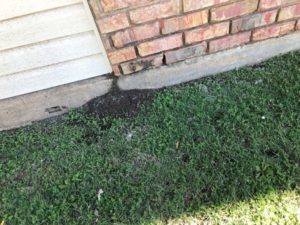
Photo Via 855Bugs Team Field Photo/Fire Ant Tube Entering Home
Fire Ants belong to the category called ‘Field Ants’ that gets its name from the fact that they prefer to nest outdoors and stay away from people in nearby homes. However, in their search for food, they can maneuver themselves through even the tiniest of opening! Their appearance is commonly known to many. They usually have dull red body coloration and vary from reddish-brown to reddish black. They also have a stinger that you can visually see if you look closely, and they average about 2 to 6 mm in length.
Fire ants can become very aggressive when their nest/home is disturbed. If provoked, they immediately begin to swarm on the perceived intruder and then sting repeatedly. As any homeowner who’s tangled with fire ants can tell you, a fire ant infestation is no small problem. Fire ant colonies cause lawn damage and can seriously disturb your yard.
The species usually live in colonies of thousands, and they often build their nests around trees, shrubs, and fences. If left unattended, fire ant mounds can be up to two feet tall and four feet wide! Even if the ant mounds in your yard have not reached that proportion, these mounds can damage the grass’s root system and inhibit the growth of grass leaving brown spots and bald spots.
CARPENTER ANTS
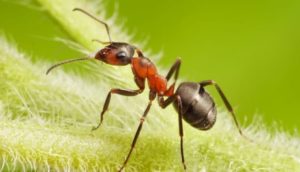
Photo Via Amdro
Carpenter Ant falls into a category that is made up of several species. They are very similar in appearance to termites and both are notorious for causing damage to your property. However, if you take a closer look at the two insects in question, you can reveal significant differences that make it easy to identify a carpenter ant vs a termite to professionals like 855Bugs.
If you look closely, you will see that a termite has no “waist” instead, its body is more rectangular. In contrast, the carpenter ants will have a well-defined narrow, constructed waist. They are reddish or dark-colored and are often seen in the open foraging for food. By comparison, termites are transparent, light, or creamy white in color, and they tend to avoid light.
Carpenter ants have no qualms about living indoors or outdoors. As long as they have woods to infest nearby, they’ll gladly stay. However, unlike Termites, Carpenter Ants do not actually eat the wood, but they are capable of damaging it a great deal by hollowing out wooden structures to build their nests — think large stumps, trees, etc. These ants can ruin your entire yard in a way that coming back from it could be difficult. Damage done by these species is pretty permanent. This is why we must stay sharp and keep an eye out for carpenter ants year-round.
ARMY ANTS
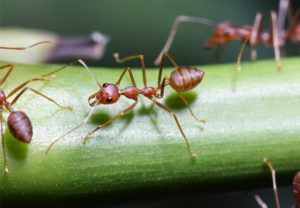
Photo Via: pests.org
Army ants are, by far, the most destructive ants to have in our yards. They get their name because they travel in large, aggressive groups looking for food. Though they are surprisingly small in size, they develop stingers as they grow, posing a painful and dangerous threat to humans and animals.
Found mostly in the southern United States, army ants travel together in large colonies destroying all of the vegetation and foliage in an area. Their aggressive nature knows no bounds as they will feed on entire sections of your grass, as well as collectively swarm and feed on plants, insects, and small animals.
Unlike field ants, army ants do not build nests and ant mounds. They are nomads that travel from place to place. And, unlike farmer ants, they do not attract harmful pests to our yards. The damage that army ants can do is attributed strictly to their large numbers and aggressive behavior.
HOW TO GET RID OF ANTS
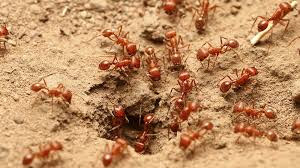
Photo Via: Getty Images
Oftentimes, a small ant population doesn’t pose much of a threat depending on the type of ant. However, left untreated, those populations grow and begin to damage our yards and gardens, threaten the safety of our children and pets, and possibly find their way into our homes in search of food. Because of this, we always recommend treating ants as soon as you see them.
If you notice that you have an ant problem, 855Bugs is here to help! We can identify what species of ant has taken up residence in your yard and treat specifically for that ant. Remember, we always provide FREE inspections on your schedule! Don’t put your lawn, pets, or family at risk.

